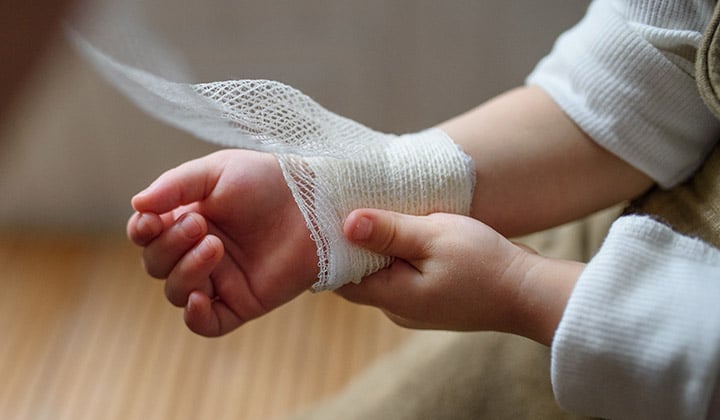Get updates
Have a parenting hack to share? Or a topic you'd like to see?
What to do when your child gets an animal bite

Children are naturally curious, and sometimes that leads to unexpected encounters with animals—whether it’s a playful pet or a wild creature. While most bites are minor, some can lead to serious infections or require special medical attention. Here's what parents need to know about keeping their children safe and ensuring proper treatment for an animal bite.
Step 1: Clean the wound immediately
The first and most important thing to do is wash the bite thoroughly with tap water. This helps remove bacteria and lowers the risk of infection. Avoid high-pressure sprays, as they can push harmful bacteria deeper into the wound. If needed, gently remove any dirt or debris.
For small scratches or mild bites, cleaning with soap and water is usually enough. But for deeper puncture wounds, bites that break the skin, or bites on the hands, feet, genitalia or face, medical attention is recommended.
Step 2: Does your child need antibiotics?
Sometimes, doctors prescribe antibiotics to prevent infection, especially in cases where the risk is higher. Your child might need antibiotics if:
- The bite is deep or has crushed skin.
- It happened on the hands, feet, genitalia or face.
- Your child has a weakened immune system.
- The bite is from a cat—cat bites have a much higher risk of infection than dog bites.
The most common antibiotic for treating bites is amoxicillin-clavulanate, which helps fight bacteria from both skin and saliva. If your child is allergic to penicillin, doctors may prescribe alternative medications.
Step 3: Does your child need a rabies shot?
Not all animals carry rabies, but bites from certain wild animals—such as bats, raccoons, skunks, groundhogs and foxes—may require rabies treatment. If the animal can’t be found and observed, doctors may start rabies shots as a precaution.
For bites from healthy pet dogs, cats or ferrets, the animal can be watched for 10 days. If the animal stays healthy, no rabies shots are needed.
Step 4: Check their tetanus vaccine status
Tetanus is a bacterial infection that can enter the body through wounds. If your child’s tetanus vaccine is up to date, they likely won’t need a booster shot. But if they haven’t had a tetanus vaccine in the past 5 years, doctors may recommend a booster.
Step 5: When to see a doctor
Take your child to the doctor if:
✅ The bite is deep, swollen or painful.
✅ It happened on the hands, feet, face, genitalia or joints.
✅ There are signs of infection, like redness, warmth or pus.
✅ The animal is unknown, wild or acting strangely.
Keeping kids safe around animals
Preventing bites is just as important as treating them. Teach kids to approach animals gently and avoid wild animals or unfamiliar pets. Even friendly pets can bite if startled or frightened!
While we hope your child never gets bitten, these tips will help you know how – and when – to take action!
